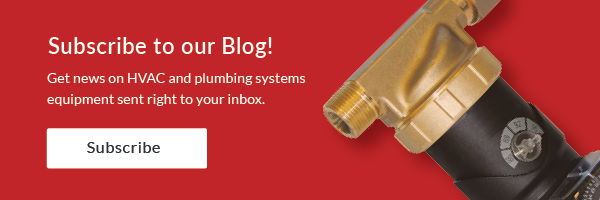Knowing how to prevent heat exchanger failures can help eliminate expensive repairs down the road. Bell & Gossett Chief Product engineer, Marvin P. Schwartz detailed the four types of failures for shell and tube heat exchangers. The article does a great job of identifying not only the common failures of the U-Tube heat exchanger but also detailing corrective actions to prevent them.
The four types of shell and tube heat exchanger failures are:
• Mechanical
• Chemically induced corrosion
• Combination of mechanical & chemically induced corrosion
• Scale
Most shell and tube heat exchanger failures can be prevented with proper design and correct installation. Premature failures can occur when mechanical issues arise, such as incorrect velocity running through the tubes, or chemical interaction with the heat exchanger components and the fluid that circulates through it.
For instance, a typical mechanical failure that occurs with too much velocity often results in metal erosion inside the U bend tubing. Fluid velocity must be matched to the tube material’s ability to withstand the erosive effects of the velocity. The recommended velocity for copper tubing should be limited to 7.5 fps.
It’s important to remember to check for proper velocity when sizing and making your final selection for the job, to prevent having too much velocity through the heat exchanger and eliminate the issue.
Schwartz’s article also explains that having properly sized steam traps and a functioning vacuum breaker will help prevent condensate to accumulate in the shell, which could result in steam hammer damage (collapse and tear) of the tubes.
Other common heat exchanger failures are also detailed in the article. This is a great piece of information to have handy when designing your next heat exchanger project.

